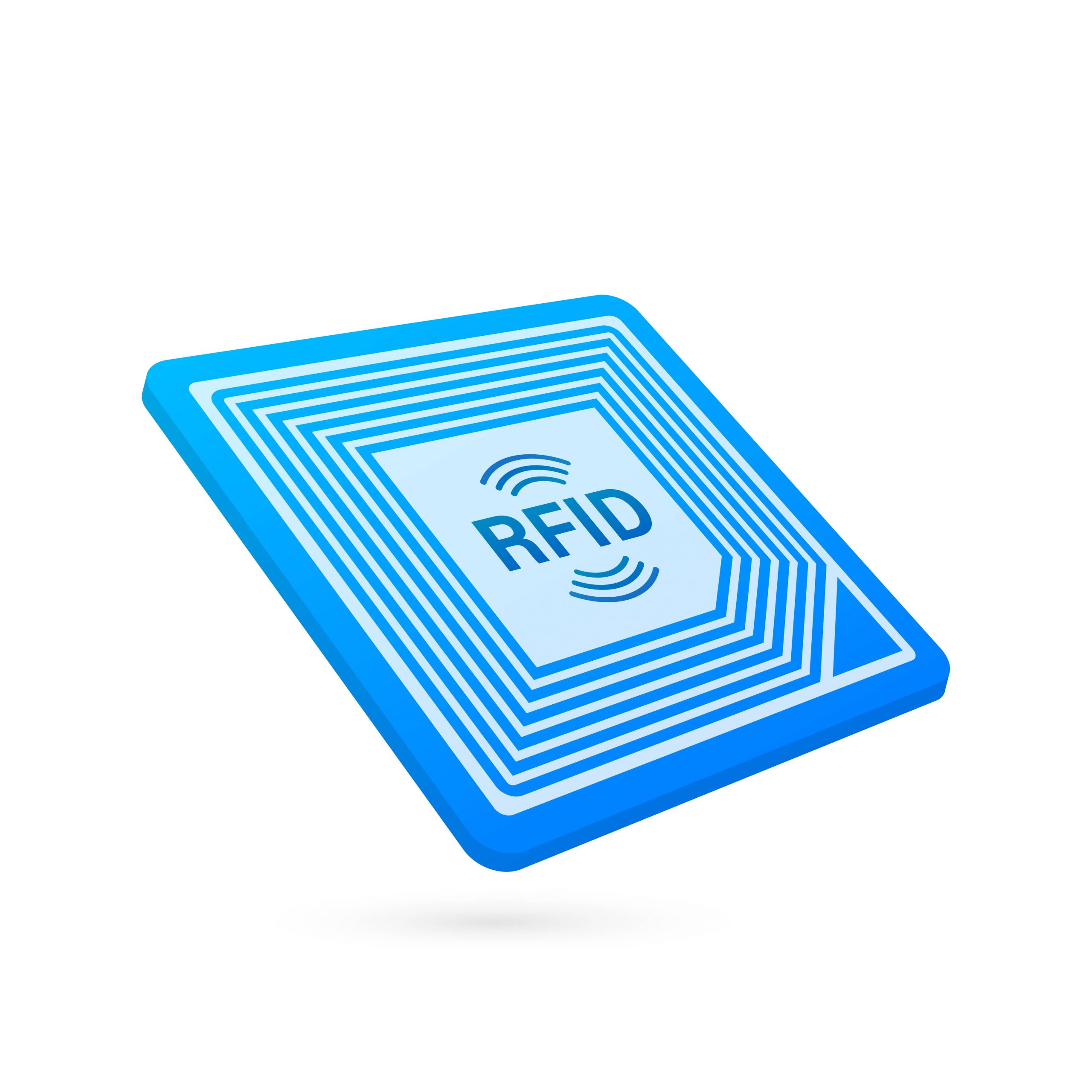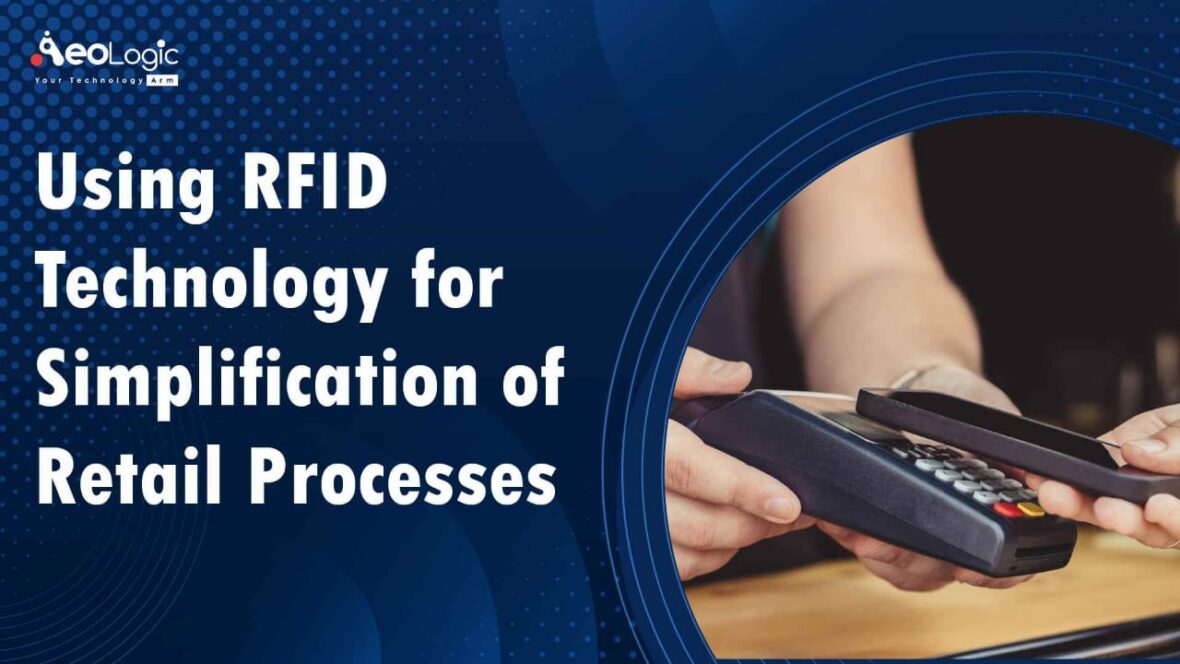RFID uses electromagnetic fields to find and track tags that are attached to things such as hangtags, stickers, or that are built into the objects themselves. RFID systems have tags and a device that can read them. Every RFID tag has a chip and a wire antenna. Active tags use a battery, while passive tags get their power from the reader. Readers can be portable or fixed. Their size and strength depend on what they are used for. In this blog, we will look at the RFID Technology for Simplification of Retail Processes.
RFID stands for Radio-frequency identification. RFID technology is a great way to make supply chains, manufacturing processes, and retail stores run more smoothly. RFIDs let people scan their items at the cash register without having to wait in line or even stop moving. RFID technology has many advantages that will help you as a consumer in the long run.
RFID technology makes supply chains more efficient by making sure that products won’t be turned to warehouses until they’ve been scanned and put on a list. RFIDs can improve the manufacturing process in a number of ways. For example, they can help keep track of how many units are made or even which machines were used. RFID technology also makes stores run more smoothly. RFID technology makes retail stores more efficient by cutting down on the time it takes to check out customers and even finding fraud in real-time. RFIDs let people like you scan your items at the cash register without having to wait in line or even come to a stop.
Also Read: How The Retail Sector is Using IoT?
How Does RFID Technology Work?

RFID inventory tracking system is a new technique that involves radio waves rather than visible light, sound, or other human-detectable qualities. RFID tags are used to provide unique identification, tracking, and security for items. Depending on the kind of RFID tag, the read range can surpass 20 meters in some cases.
Since its first military application in World War II, radio frequency identification (RFID) has gone a long way. In addition, the costs associated with RFID adoption continue to fall, making the system more cost-effective and efficient over time.
Components of RFID Systems
Retail inventory tracking system technologies can be used for a broad range of applications, such as managing and tracking assets, providing related customer services, and making automated payments. Each RFID system has different parts and it can be set up in different ways. Hence, it can support a specific business process for an enterprise.
Boost your business with our RFID Solutions!
An RFID system could be made up of three parts:
- An RF subsystem that uses wireless communication to identify and execute.
- The inter-enterprise subsystem integrates enterprise subsystems for cross-organizational information sharing.
- An enterprise subsystem comprises computers running specific software to store, process, and analyze RF subsystem data.
Also Read: The Role of Technology in the Evolution of Retail
Benefits of RFID System in Retailing
RFID technology can keep better track of inventory in real-time, which cuts down on processing time and labor. As these moving goods are tracked throughout the supply chain, RFID/EPC opens up several new possibilities and uses. Transparency of accurate inventory data from manufacturer’s factory floor to warehouses to retail stores improves and transforms supply chain processes. RFID technology can help a wide range of people and organizations, such as hospitals and their patients, retailers, and their customers.
Inventory tracking system use in retail is rising. One research indicated that 52% of organizations are investing more in sensors and AI. Another 27% want to use it in the next two years. Let’s examine why.
RFID Saves Time

As the once said, “time is money,” and RFID saves retailers a lot of time. At our T-Mobile stores, it takes about an hour a day to take inventory of high-value items and about three and a half hours once a month to take inventory of everything. And that is a fairly small store. Workers have to scan each item one at a time, which is stressful and takes a lot of time. It can also lead to a lot of mistakes made by humans.
With RFID, retailers can tag an item, and instead of pointing and scanning each one, they can scan an entire area in seconds with a handheld wand/reader for a quick and accurate read. Most wands can do thousands of reads per second and update the system with the results. Complete inventory now takes less than five minutes at our T-Mobile stores, saving over 30 hours each month. Now, workers can spend their valuable time selling products or helping customers. This also makes it easy to check the stock quickly and make sure shelves are restocked when needed.
Also Read: The Importance of CRM in the Retail Sector
Provides Real Time Data
Every store owner knows how hard it is to look for a product online only to find that it has already sold out. Instead of struggling to manage these steps in your supply chain, RFID technology can track and upload changes in your company’s stock in an instant, without any manual input. This will allow your company to give customers and employees the best and most up-to-date information, which will improve efficiency.
Also Read: How Bright is the Future of Retail Technology in India?
RFID Improves Shop Transparency
Finding a product in a store is always a problem for retailers. Did someone steal it, or is it just lost somewhere in the store? For example, if a customer picks up an item but then decides not to buy it and puts it down somewhere else, RFID can find that item anywhere in the store. Using a “find it” function, which is like a game of “hot and cold,” workers can find the product because the lost item will beep as you get closer or farther away. It can also be used to track the item as it moves through the store.
Effectiveness of RFID
RFID is more efficient than you thought. Instead of scanning each barcode individually, RFID tags allow a corporation to scan all inventory in one go. This labor management asset reduces staff stress and improves customer data.
With RFID, a retailer can also measure peak traffic hours. This can help with future inventory planning.
RFID Reduces Retail Theft
According to the National Retail Federation (NRF), theft, fraud, and other retail shrink reached $61.7 billion in 2019. Industry security executives noted rises in shoplifting, organized retail crime, and staff theft cases. Putting an RFID tag on an item can stop theft, whether it’s done by a shoplifter or a member of staff.
When a thief tries to leave the store with an item that has an RFID tag, the security alarm will go off to let the staff know that a thief is trying to leave without paying for an item. With a unique RFID code for each item, retailers can now tell if an item being returned was stolen from another store or if it was originally sold at a discount. This can help cut down on fraudulent returns. Retailers can also use wands or readers to check the purses and pockets of employees as they leave the store. This makes it less likely that high-value items will be stolen. RFID is not only necessary for accurate accurate inventory, but it can also improve the experience for both employees and customers. This can lead to more sales and lower costs.
Also Read: How Technology Can Drive Transformation in Retail?
Conclusion
RFID will become more popular in India and around the world as its costs keep going down and the technologies that help it do its job get better. RFID in retail can improve the customer experience, make employees more confident in the systems, and bring in more money. It can also give you a lot of information about your customers and products, which can give you a long-term edge over your competitors. RFID is now here, and it will only keep growing. Contact Aeologic Technology to find out more about RFID technology.







